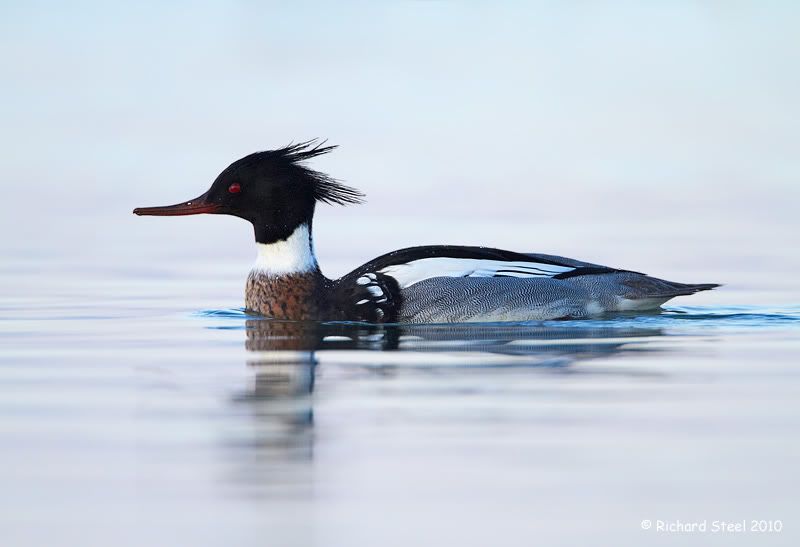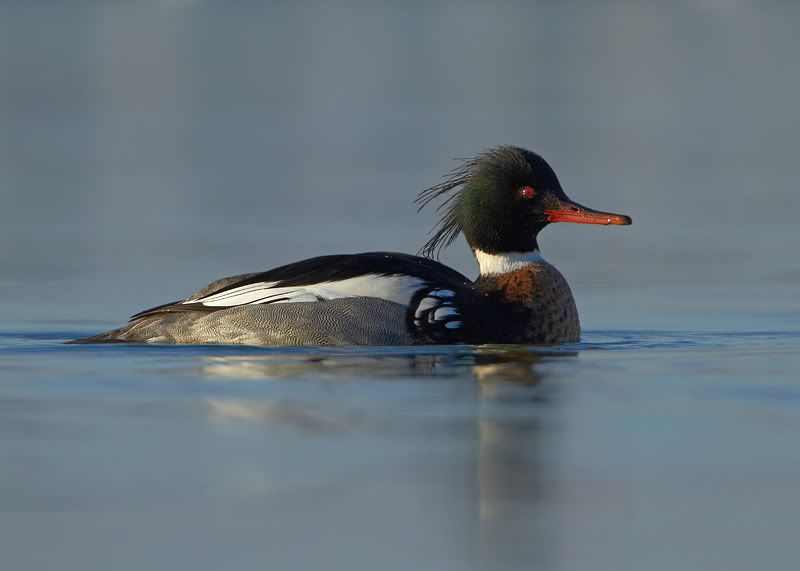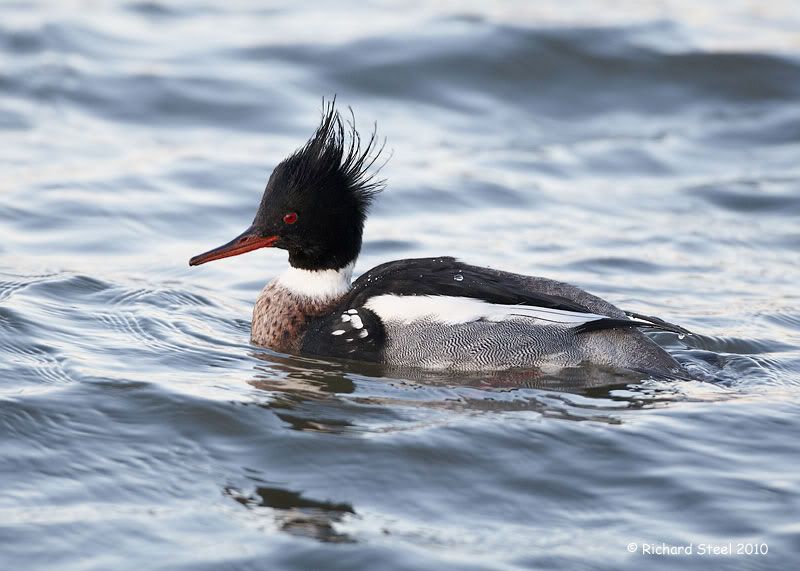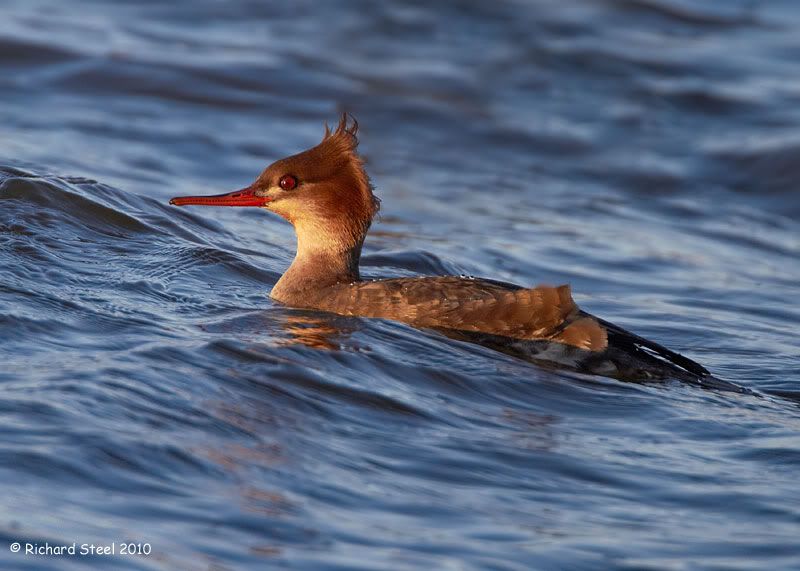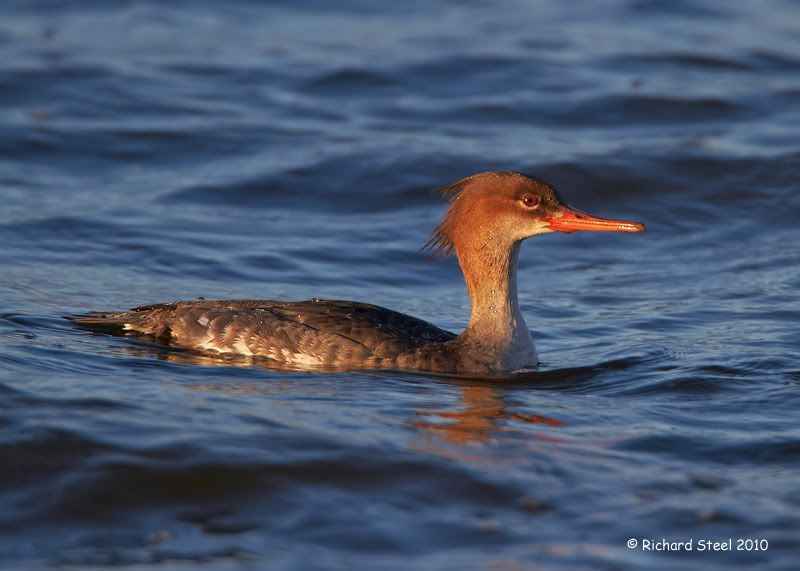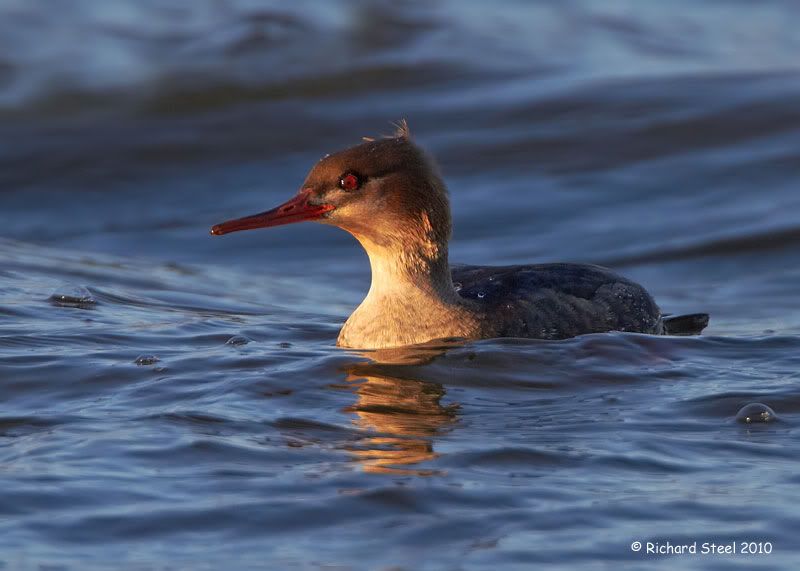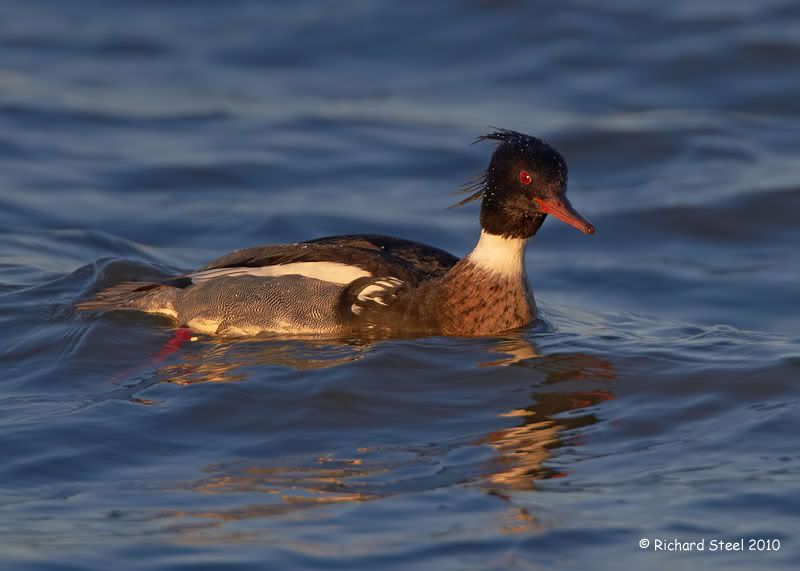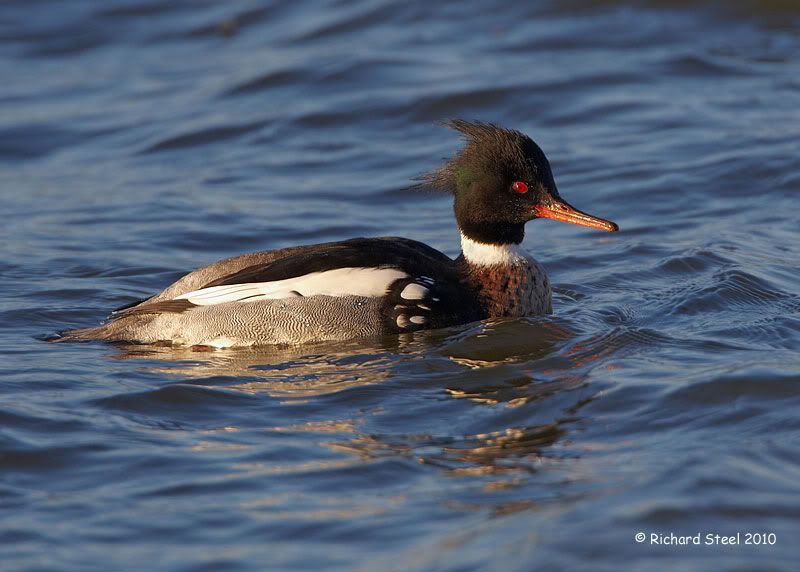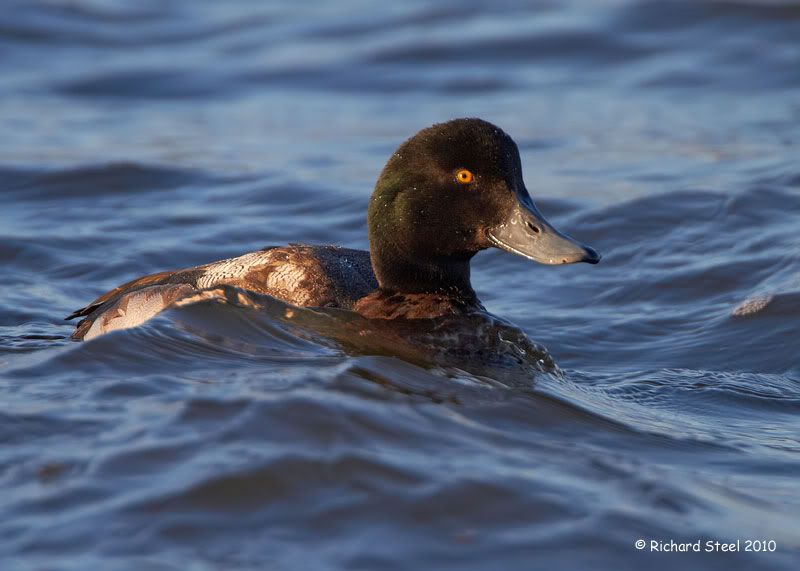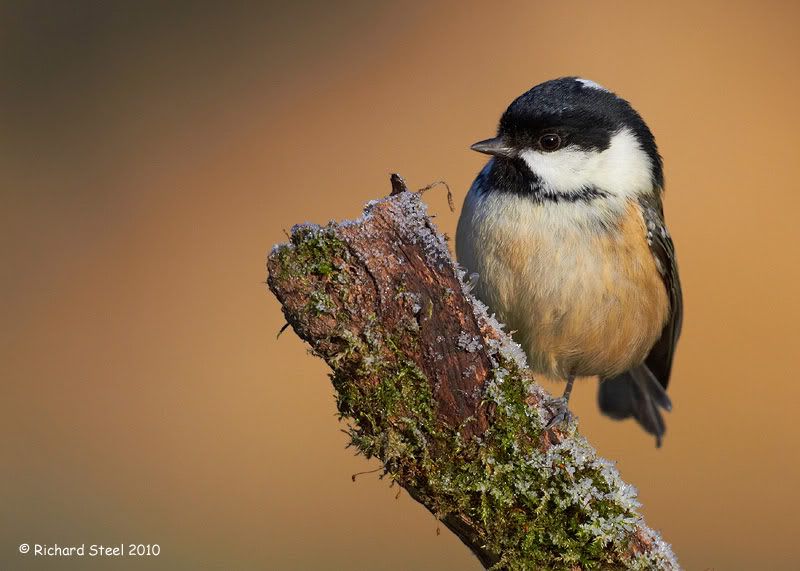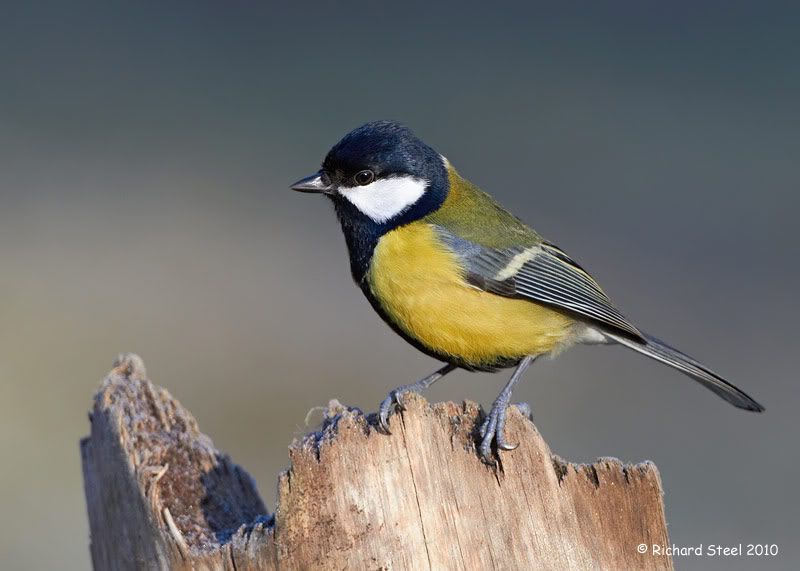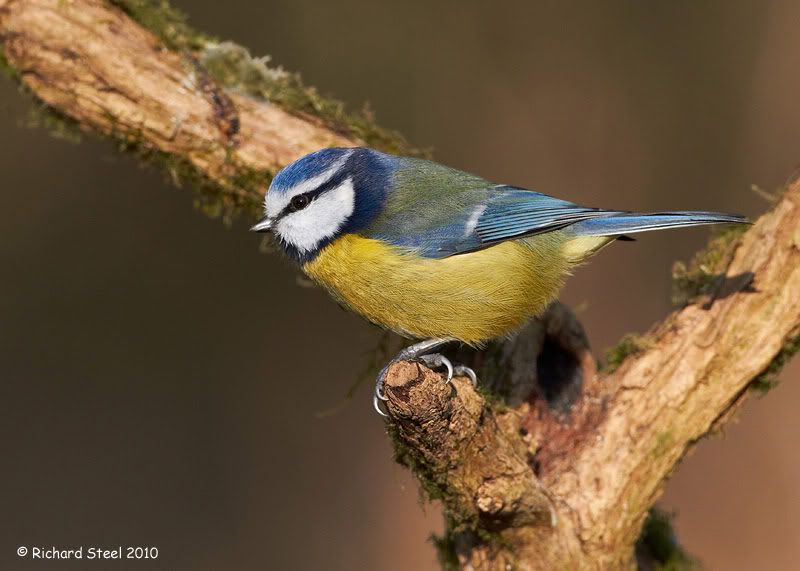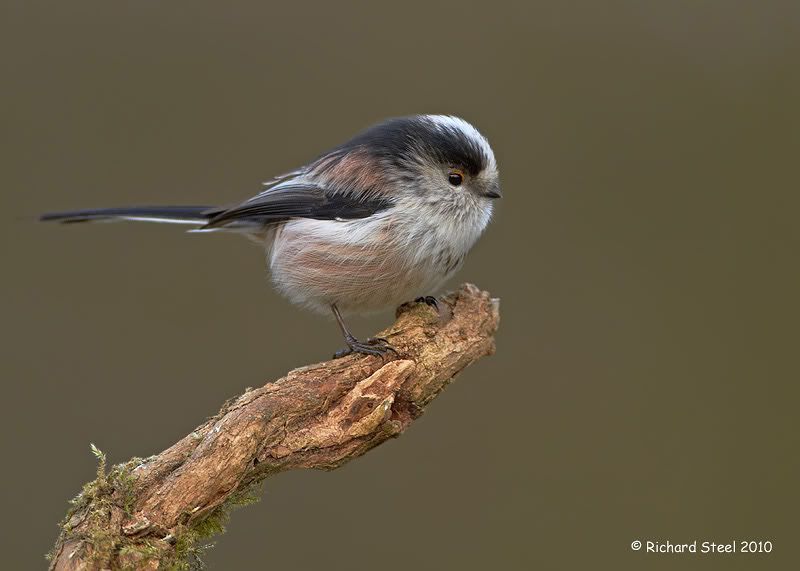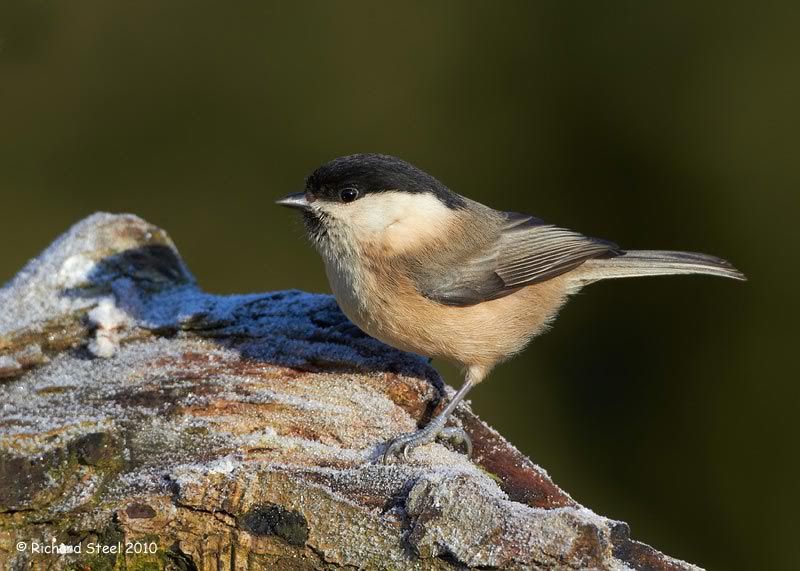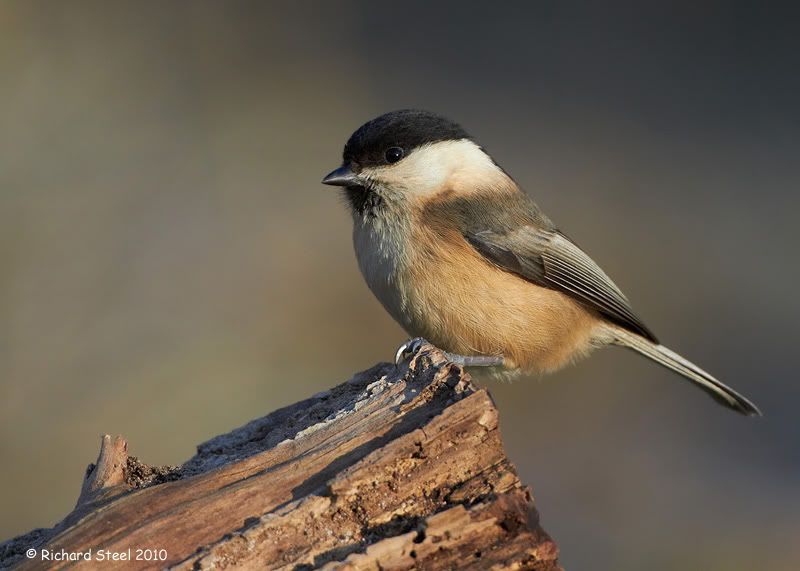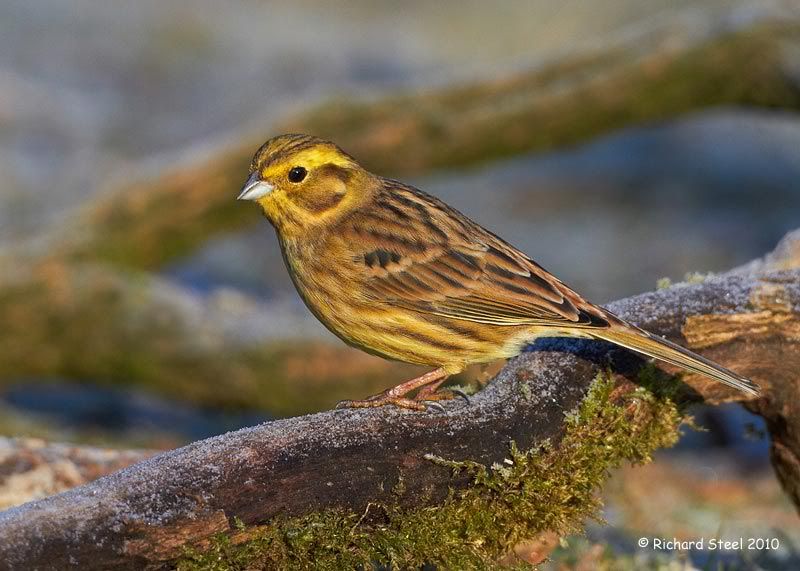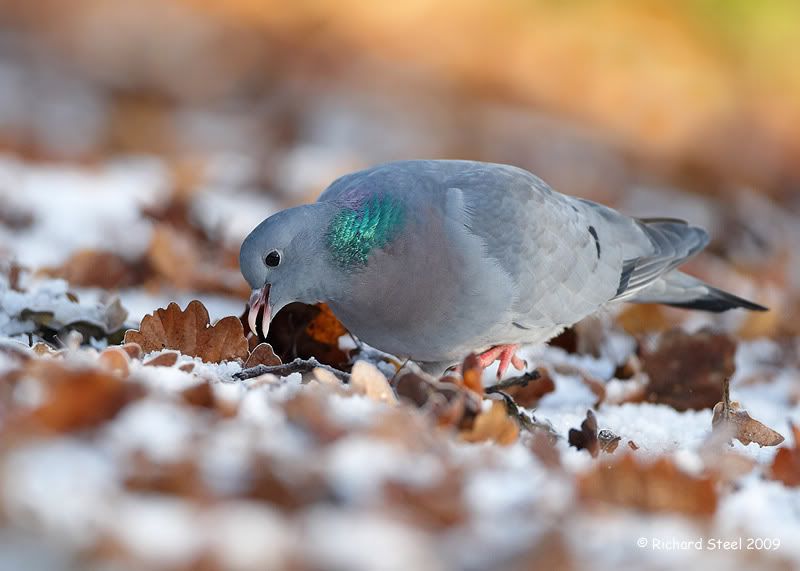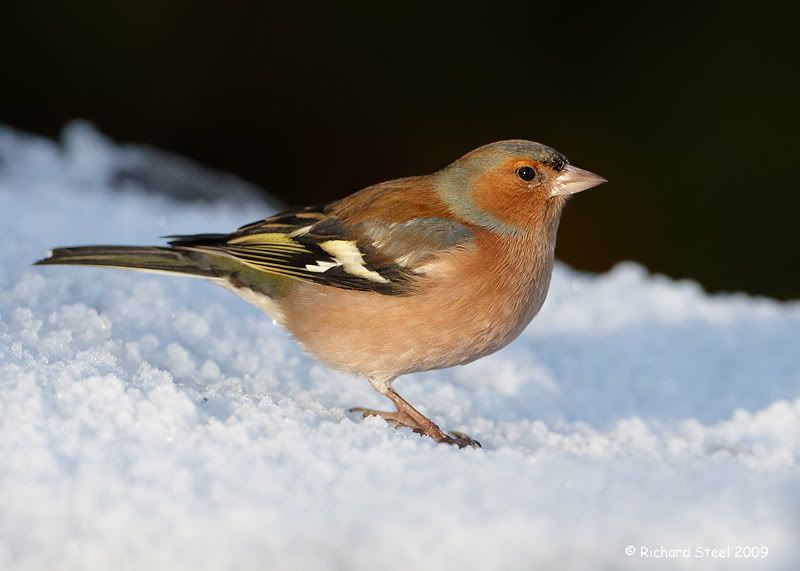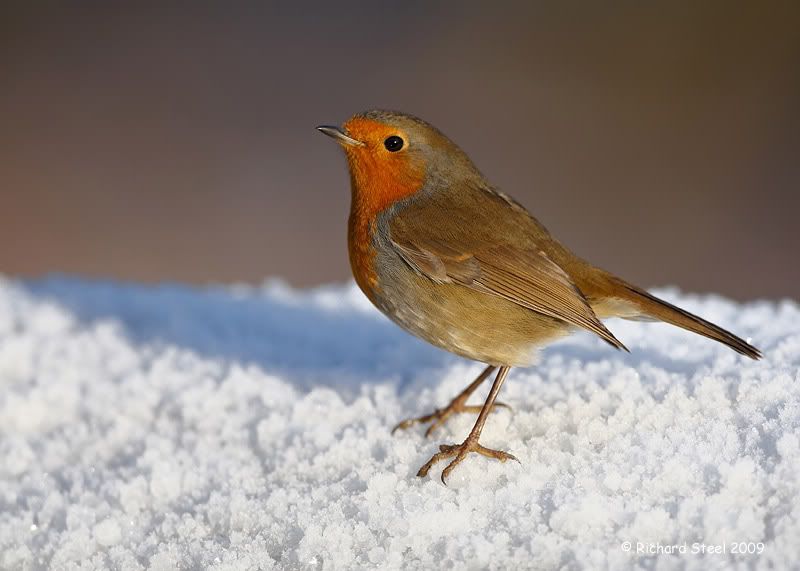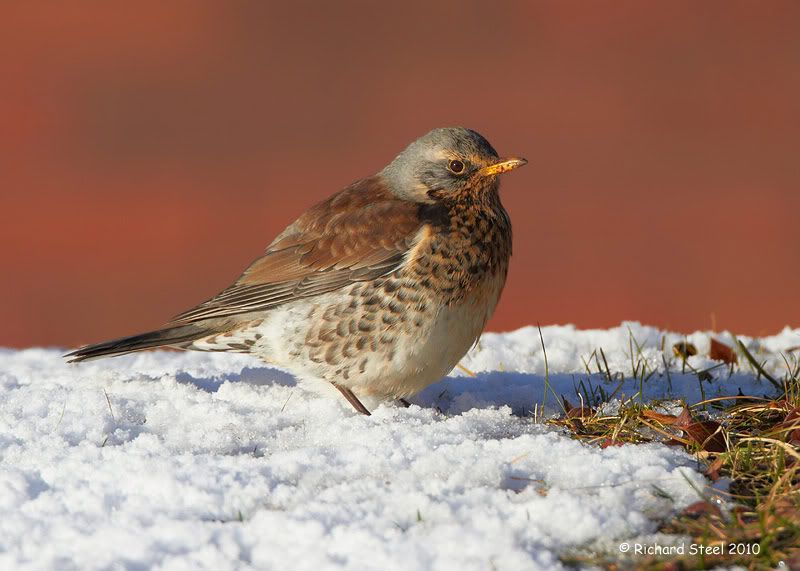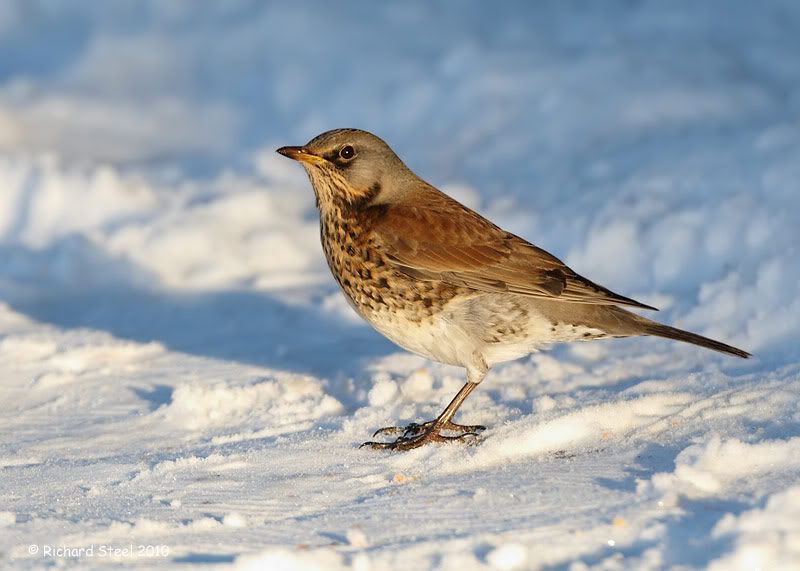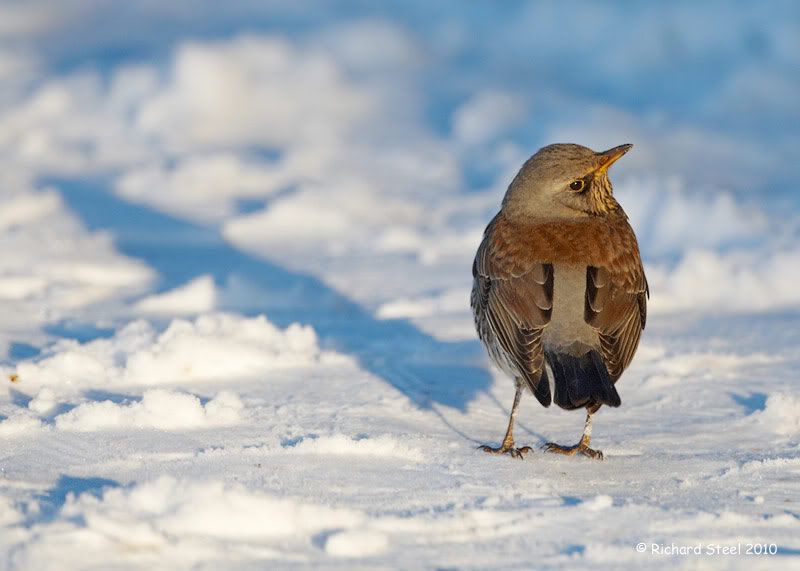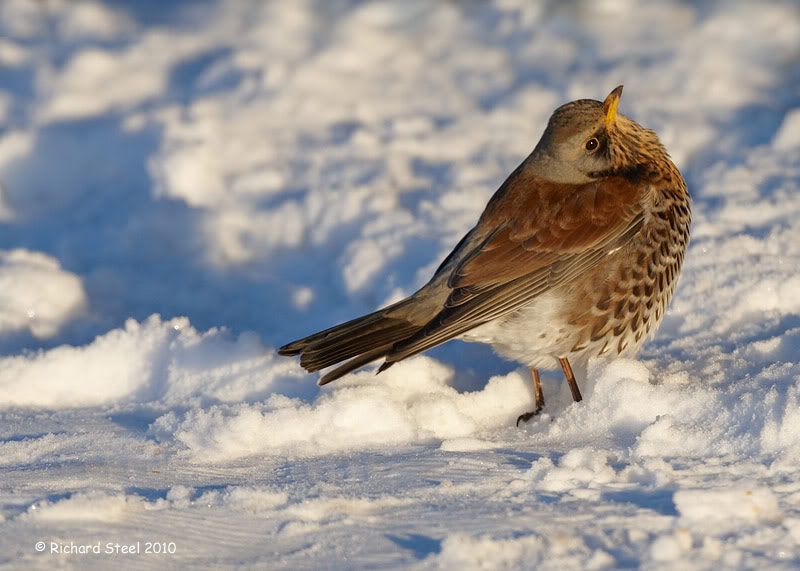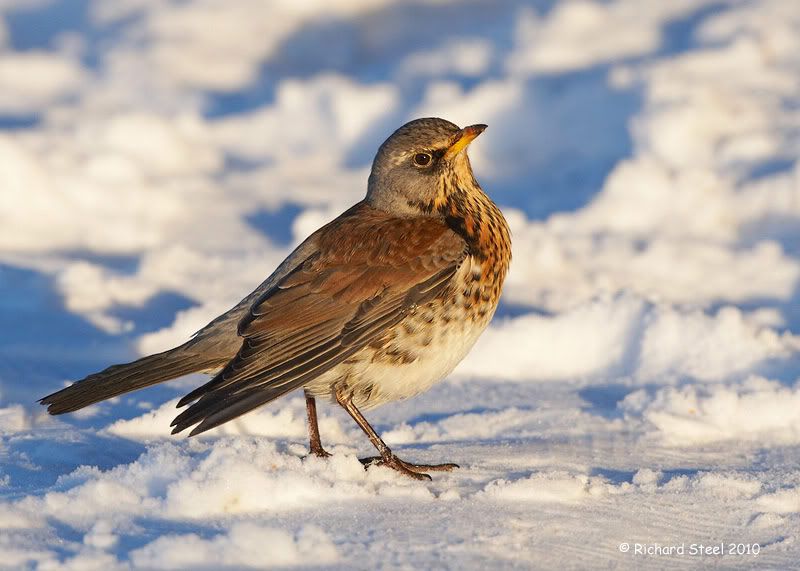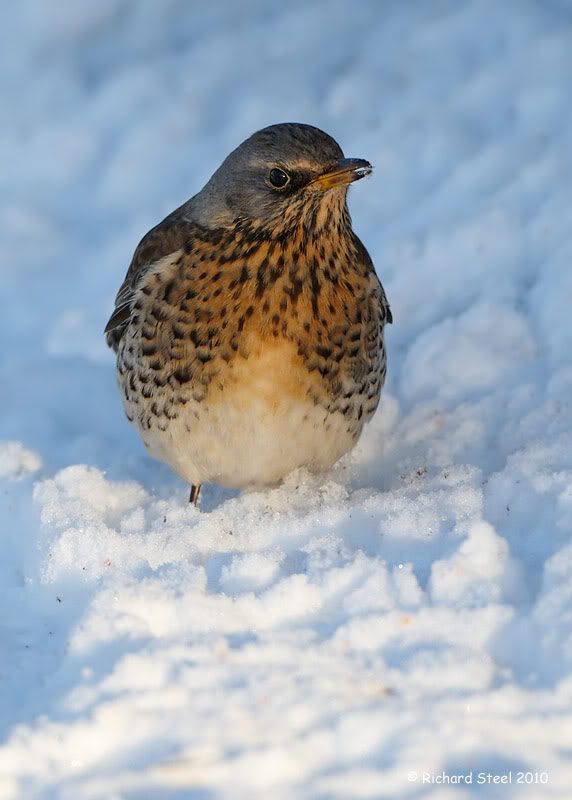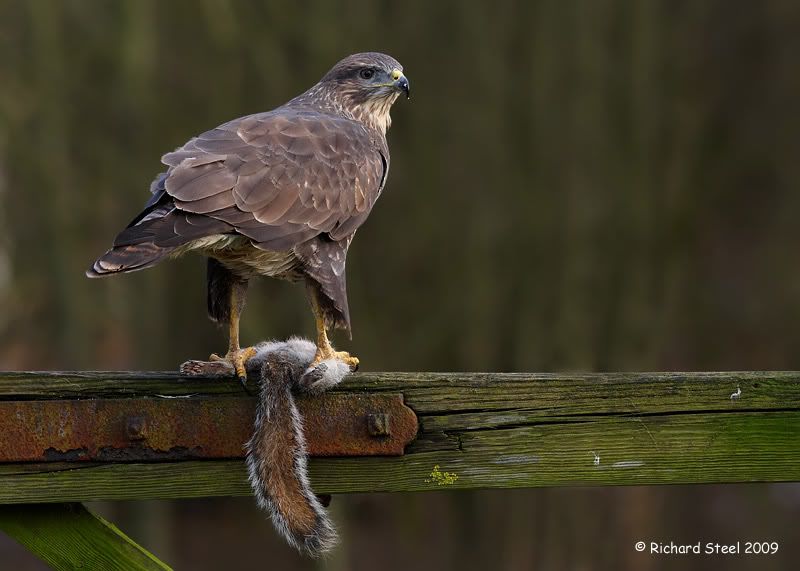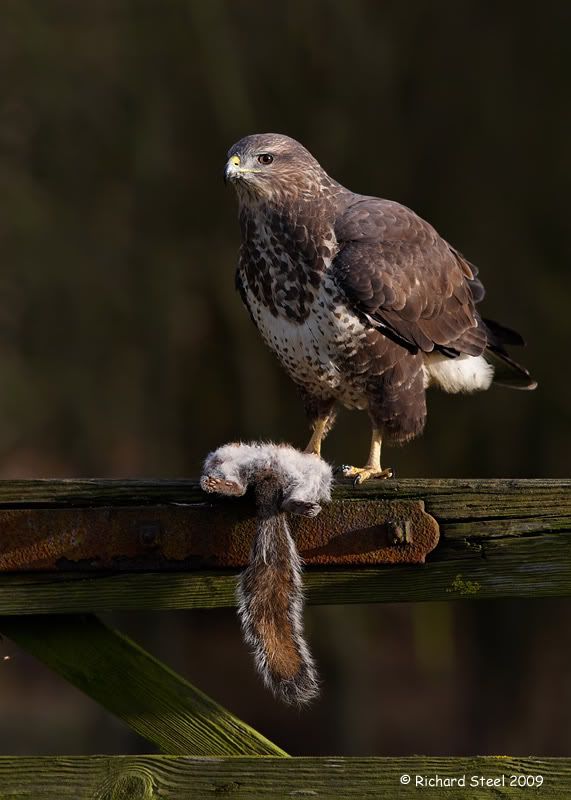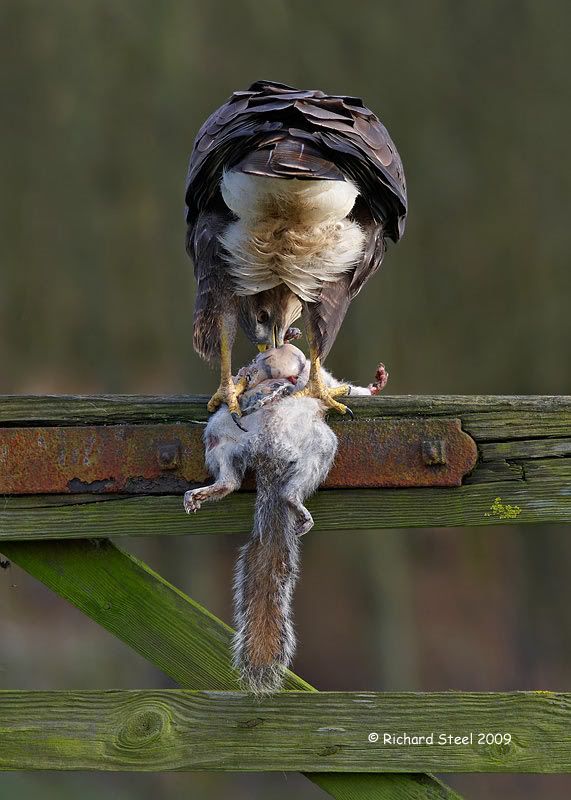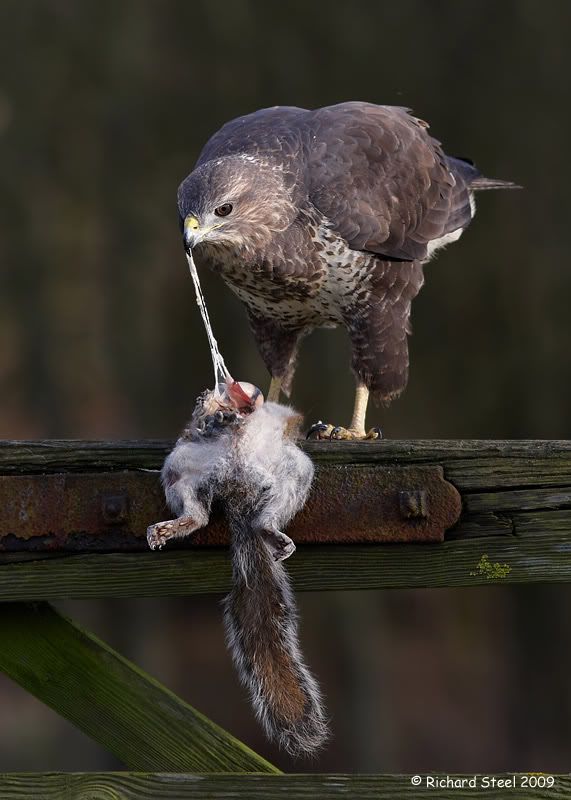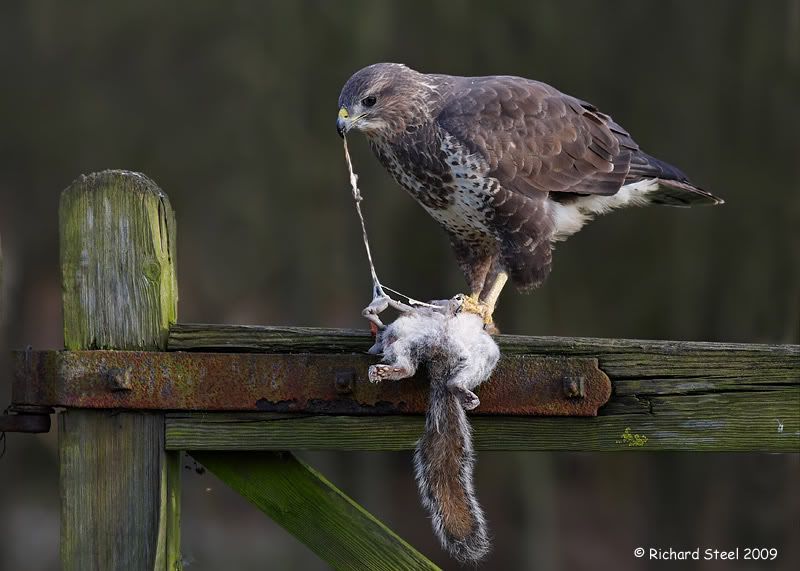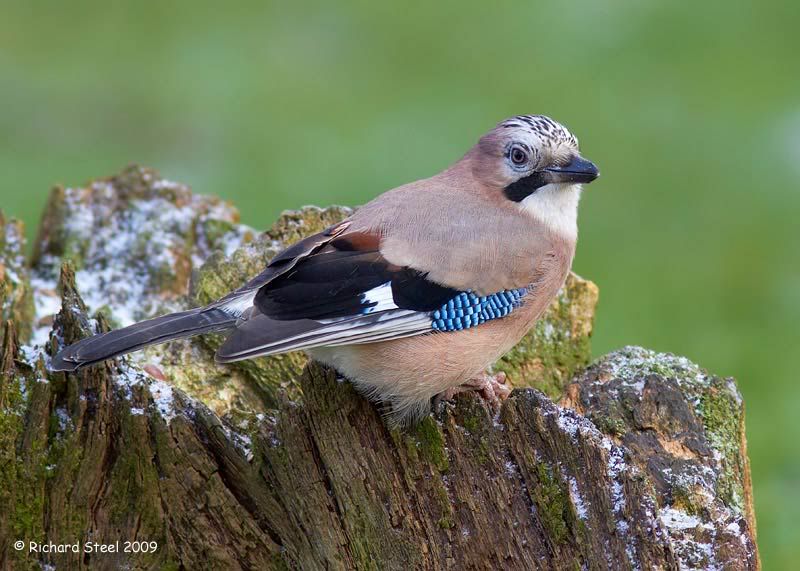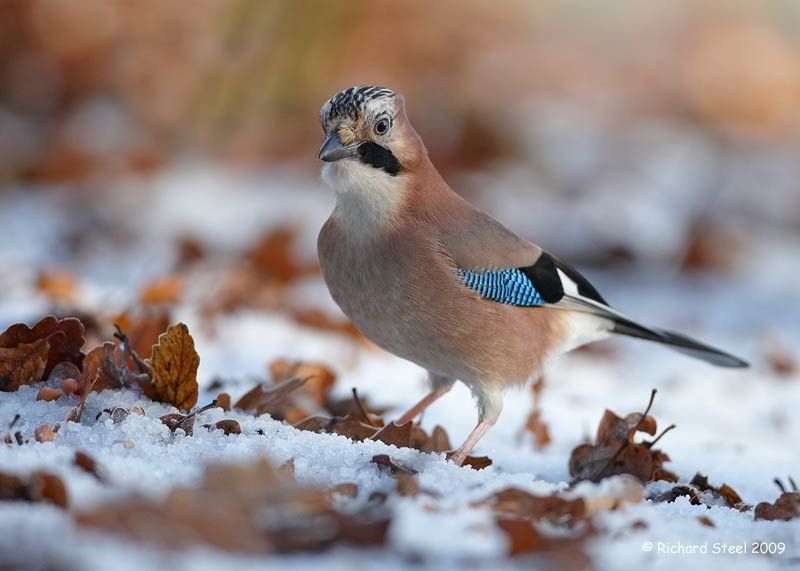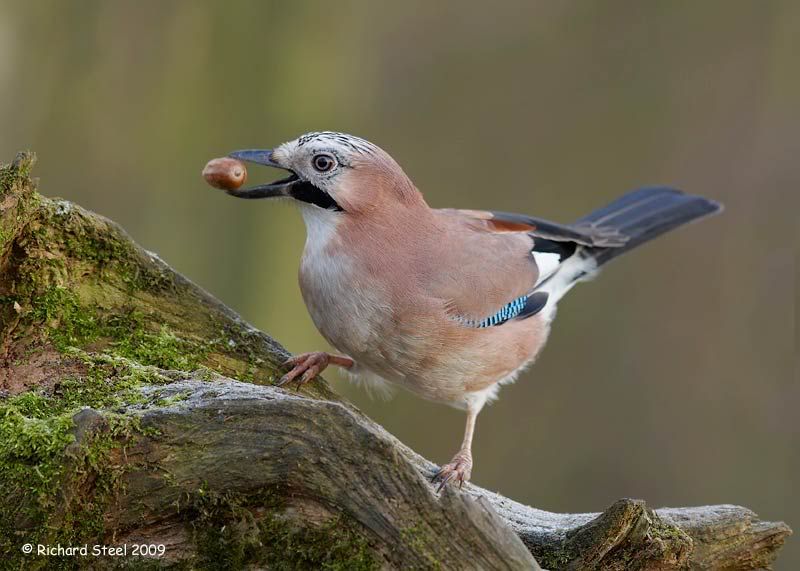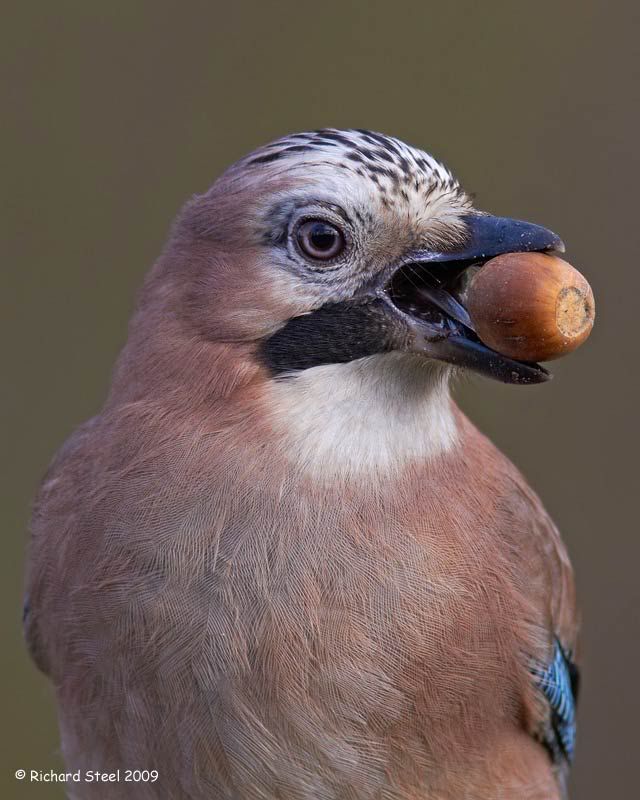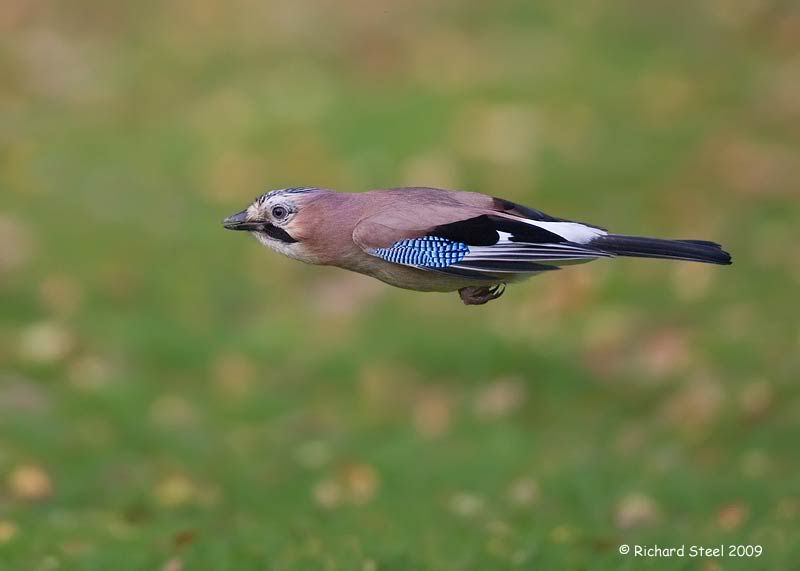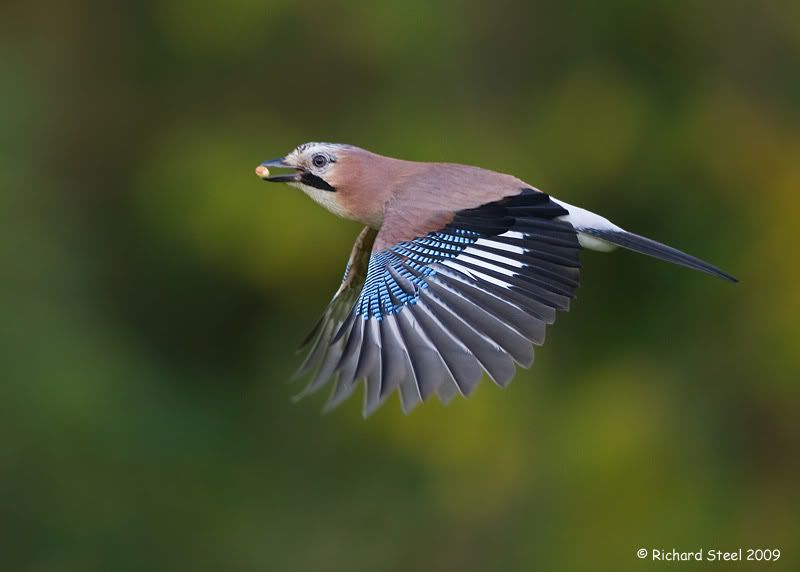Punk Mergansers
Sawbills rank amongst my favourite water birds. They are all attractive, present a good challenge both in being difficult to approach and a tough photograph exposure in their various combinations of black and white. There has been the usual group of winter Red-breasted Mergansers on the large local marine lake and I have had a couple of brief sessions with them. This is a bird that has a permanently 'bad hair day'.
The first session was on a bitterly cold day with flat calm water conditions but the birds were playing tricky as usual. I was laid flat in the frost on a floating landing pontoon. A male bird came in close as the water took on a slight pink tinge just before the sun had come up over the horizon.
The sun appeared but it was a while before another bird came anywhere close.
That was all I managed to get on that session, so a return trip yesterday was in needed. I admit I ignored the doctors orders but it was the first morning with clear skies in a while and my neck actually feels much better for some gentle camera wielding exercise. On this session a small group of birds were actively feeding along the edge of the lake providing some good photo opportunities. A good approach when photographing sawbills, or any diving birds for that matter, is to get in to position while they are under water. Usually you have about 20 seconds for mergansers to make the move. The wind was pushing in creating some useful low waves across the lake to add some further interest to the photos. I took a few photos while waiting for the sun to get up.
The the first rays appeared bathing the birds in a golden glow. The females were looking particularly good in this first light.
The white patches of the males were turned golden by the those first rays.
Once the sun gets a little higher the males become a real exposure headache as it is very difficult not to over expose the white neck and wings whilst trying to retain detail in the black head with its green sheen.
To finish this post, in with the group there was a rather tatty looking Scaup which must have been suffering a bit of an identity crisis as it was diving in unison with the mergansers. I assume this was a youngster changing into adult plumage and decided it would look best if half hidden behind a low wave.
Sunday, January 31, 2010
Friday, January 22, 2010
Doctor's Orders
Photographing wildlife can put a fair amount of strain on the body. Anyone who has ever tried making a commando crawl with camera gear across estuary mud for wading birds will certainly know the aches and pains that can result a couple of days later. Often you need to adopt awkward positions with a heavy camera, to get the angle on the subject, whilst staying still for long periods which can play havoc with some muscles. The upshot of my recent photographic exploits have left me with intense pain down the right side of the neck that doesn't seem to be improving and so I headed to the docs. The Doctor's orders were ..'no photography for two weeks' and not the 'you should take a long holiday somewhere exotic with your camera' that I was hoping for. The withdrawal symptoms are already setting in but softened by the poor weather and light.
I do have a bit of a backlog of photographs and so will be able to keep with regular Blog posts while I recover. The set of images for this post were taken on New Years Day. I always start the year with a clean slate and as if I have never photographed anything as it gives you fresh eyes even for the very common. I also like to start with a productive first session and headed off with my friend Steve down to the Midlands for the day. The roads were quiet and I was hoping for a peaceful day, not really thinking that later everyone would be out in the sun walking off their hangovers! Despite the disruption it was a fun start with a good variety of tit species to photograph.
A tiny bird that requires some quick responses with the camera, the Coal Tit
At the other end of the tit size scale, the Great Tit.
The Blue Tit, which really are beautiful birds when you stop and take time to look at their colours.
A group of Long-tailed Tit fluttered through quickly but just as the sun disappeared behind a cloud.
One of the birds I had travelled to target was the Willow Tit. These hyperactive birds are always tricky to photograph.
The other bird I was hoping to photograph, the Yellowhammer, did not show very well due to the number of people walking around with only this less colourful female bird appearing.
Photographing wildlife can put a fair amount of strain on the body. Anyone who has ever tried making a commando crawl with camera gear across estuary mud for wading birds will certainly know the aches and pains that can result a couple of days later. Often you need to adopt awkward positions with a heavy camera, to get the angle on the subject, whilst staying still for long periods which can play havoc with some muscles. The upshot of my recent photographic exploits have left me with intense pain down the right side of the neck that doesn't seem to be improving and so I headed to the docs. The Doctor's orders were ..'no photography for two weeks' and not the 'you should take a long holiday somewhere exotic with your camera' that I was hoping for. The withdrawal symptoms are already setting in but softened by the poor weather and light.
I do have a bit of a backlog of photographs and so will be able to keep with regular Blog posts while I recover. The set of images for this post were taken on New Years Day. I always start the year with a clean slate and as if I have never photographed anything as it gives you fresh eyes even for the very common. I also like to start with a productive first session and headed off with my friend Steve down to the Midlands for the day. The roads were quiet and I was hoping for a peaceful day, not really thinking that later everyone would be out in the sun walking off their hangovers! Despite the disruption it was a fun start with a good variety of tit species to photograph.
A tiny bird that requires some quick responses with the camera, the Coal Tit
At the other end of the tit size scale, the Great Tit.
The Blue Tit, which really are beautiful birds when you stop and take time to look at their colours.
A group of Long-tailed Tit fluttered through quickly but just as the sun disappeared behind a cloud.
One of the birds I had travelled to target was the Willow Tit. These hyperactive birds are always tricky to photograph.
The other bird I was hoping to photograph, the Yellowhammer, did not show very well due to the number of people walking around with only this less colourful female bird appearing.
Saturday, January 16, 2010
Birds on Ice
Snow has been a rare occurrence in recent years where I live. The cold snap that descended upon the UK over the last few weeks has made a welcome change and provide a chance to photograph some birds amongst the snow. A ground covering of snow can create some beautiful lighting conditions with the undersides of birds becoming illuminated by the reflected light. It can also create some exposure headaches and the white can easily fool the camera's exposure meter resulting in dark photographs and grey snow. This can be overcome by dialing in some positive exposure compensation.
My recent efforts of birds in the snow are a compilation of two sessions and so there will be quite a few photographs on this post. The first was in some local woods around Christmas, although snow is a generous description as it was more of a layer of frozen hail that crunched under foot. Starting of with a real exposure challenge, a fine looking magpie.
A Stock Dove foraging through the ice bound leaf litter.
A pristine male chaffinch. It seems quite hard these days to find chaffinch that have not been affected by foot disease.
With next year's Christmas e-card in mind I couldn't resist a few robin photographs.
The next session was last weekend when there was a reasonable layer of proper snow to try some for some Fieldfare and Redwing photographs. The prolonged cold weather and shortage of food has resulted in large numbers of these birds arriving in back gardens, although not mine, so I headed out to find some.
The Redwing were playing hard to get and tending to be skulking in areas below bushes where the snow had melted.
The Fieldfare were more accommodating and must have been very hungry as they were feeding on Sea Buckthorn berries which in milder winters I have seen them completely ignore.
The birds were striking some interesting poses in the low late afternoon light.
Last photograph of a bird lurking on the edge of the shadows
The snow has all melted now and I think just in time as the birds were beginning to really look as if they were struggling for food. If you have been putting food and water out for them in the cold weather please continue to do so as they will need to build up their reserves.
Snow has been a rare occurrence in recent years where I live. The cold snap that descended upon the UK over the last few weeks has made a welcome change and provide a chance to photograph some birds amongst the snow. A ground covering of snow can create some beautiful lighting conditions with the undersides of birds becoming illuminated by the reflected light. It can also create some exposure headaches and the white can easily fool the camera's exposure meter resulting in dark photographs and grey snow. This can be overcome by dialing in some positive exposure compensation.
My recent efforts of birds in the snow are a compilation of two sessions and so there will be quite a few photographs on this post. The first was in some local woods around Christmas, although snow is a generous description as it was more of a layer of frozen hail that crunched under foot. Starting of with a real exposure challenge, a fine looking magpie.
A Stock Dove foraging through the ice bound leaf litter.
A pristine male chaffinch. It seems quite hard these days to find chaffinch that have not been affected by foot disease.
With next year's Christmas e-card in mind I couldn't resist a few robin photographs.
The next session was last weekend when there was a reasonable layer of proper snow to try some for some Fieldfare and Redwing photographs. The prolonged cold weather and shortage of food has resulted in large numbers of these birds arriving in back gardens, although not mine, so I headed out to find some.
The Redwing were playing hard to get and tending to be skulking in areas below bushes where the snow had melted.
The Fieldfare were more accommodating and must have been very hungry as they were feeding on Sea Buckthorn berries which in milder winters I have seen them completely ignore.
The birds were striking some interesting poses in the low late afternoon light.
Last photograph of a bird lurking on the edge of the shadows
The snow has all melted now and I think just in time as the birds were beginning to really look as if they were struggling for food. If you have been putting food and water out for them in the cold weather please continue to do so as they will need to build up their reserves.
Saturday, January 09, 2010
One Less Squirrel
Before I start posting photographs from this new year, I thought I would share an interesting encounter I had with a buzzard just before Christmas. An early present.
I will warn you now that the photos below are quite graphic in their content of a squirrel being pulled apart and therefore those of a sensitive nature may wish to skip this post. However, the photos serve as a good reminder that nature is the big harsh game of survival. Eat, drink, avoid being eaten and breed are the basic rules.
So a quick introduction to the predator, the Common Buzzard. I understand their main prey is rabbits but they are quite an adaptable bird and I have seen them happily feeding on earthworms in a horse paddock. They apparently have such good eyesight that they can spot a rabbit a mile away. Not much hope you would think for a photographer then to get anywhere close to one!
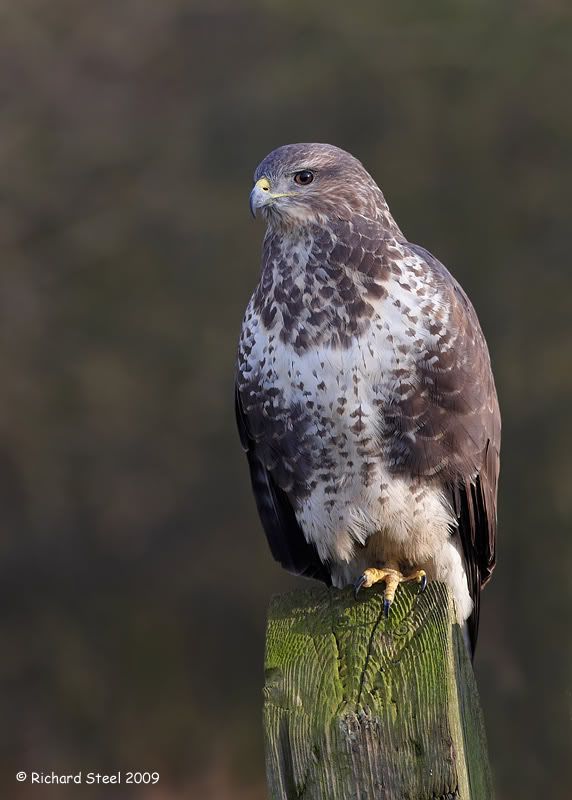
Predator with prey.
The bird then started feeding pointing away from my position.
It suddenly stopped and looked back straight towards me, despite staying motionless and silent, and I thought for a few moments it was game over and the bird would leave. However, the distraction that caught the attention of the bird had been a passing sparrowhawk.
The squirrel lunch then resumed and started getting messy.
After about twenty minutes the bird away with the remains leaving me feeling as a privileged witness to this moment.
Before I start posting photographs from this new year, I thought I would share an interesting encounter I had with a buzzard just before Christmas. An early present.
I will warn you now that the photos below are quite graphic in their content of a squirrel being pulled apart and therefore those of a sensitive nature may wish to skip this post. However, the photos serve as a good reminder that nature is the big harsh game of survival. Eat, drink, avoid being eaten and breed are the basic rules.
So a quick introduction to the predator, the Common Buzzard. I understand their main prey is rabbits but they are quite an adaptable bird and I have seen them happily feeding on earthworms in a horse paddock. They apparently have such good eyesight that they can spot a rabbit a mile away. Not much hope you would think for a photographer then to get anywhere close to one!

Predator with prey.
The bird then started feeding pointing away from my position.
It suddenly stopped and looked back straight towards me, despite staying motionless and silent, and I thought for a few moments it was game over and the bird would leave. However, the distraction that caught the attention of the bird had been a passing sparrowhawk.
The squirrel lunch then resumed and started getting messy.
After about twenty minutes the bird away with the remains leaving me feeling as a privileged witness to this moment.
Sunday, January 03, 2010
From Small Jays Do Mighty Oaks Grow
I love Jays as they are beautiful and inquisitive birds that I can never grow tired of photographing. Having spent a long time with these birds it is amazing, particularly in the Autumn, to watch their constant movements to and from oak trees to collect acorns to hide for the winter months ahead. I cannot believe that they can possibly remember all the sites where they bury the acorns and therefore they must be responsible in part for the presence of some of the mighty oak trees of the English Countryside.
I was backing up and tidying up the photos from 2009 over Christmas and thought I would put together a small compilation of Jay photographs which were mainly taken in December.
The start of a new oak tree?
The common sight of a Jay with acorns.
Regular readers will know I had a bit of an attempt in 2009 with 'Project J' to get some Jay flight photos which was not wholly successful as I really did not put in the considerable effort required.
This was not quite the flight photographs I had in mind. Wingless flight...or half bird and half rocket!
Nearly there but I did not quite nail the photos as I wanted.
This is certainly a project I will be pursuing with more effort in 2010.
One last photograph to finish off...just because I like Jays
Labels:
Jay
Subscribe to:
Posts (Atom)

